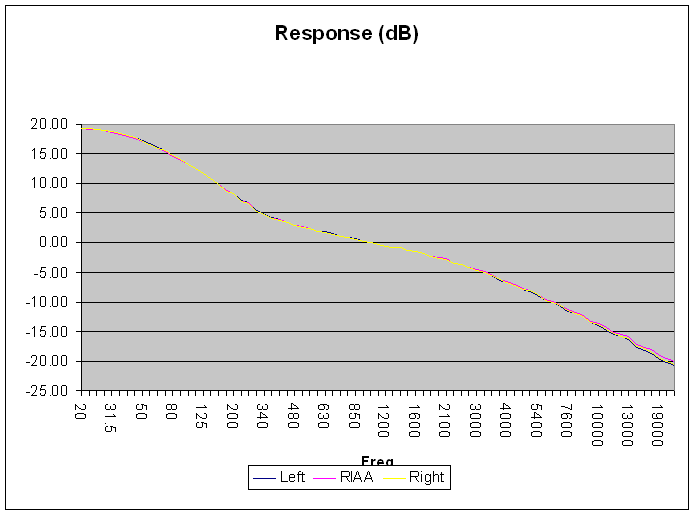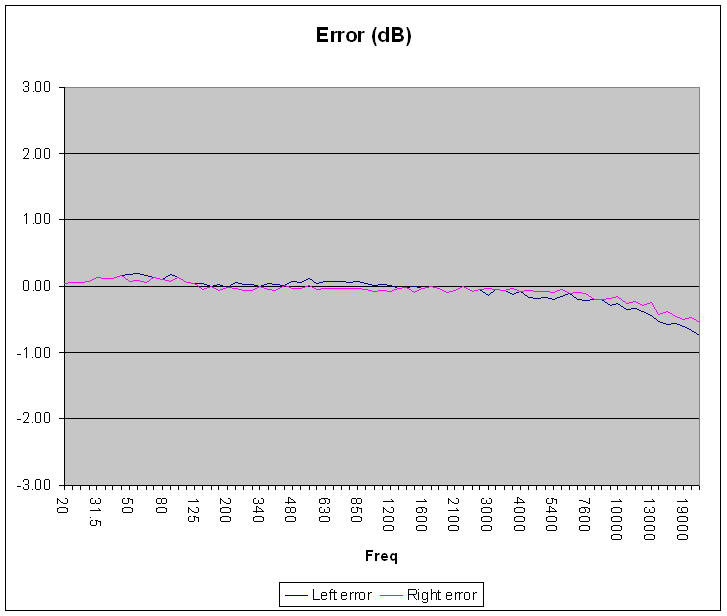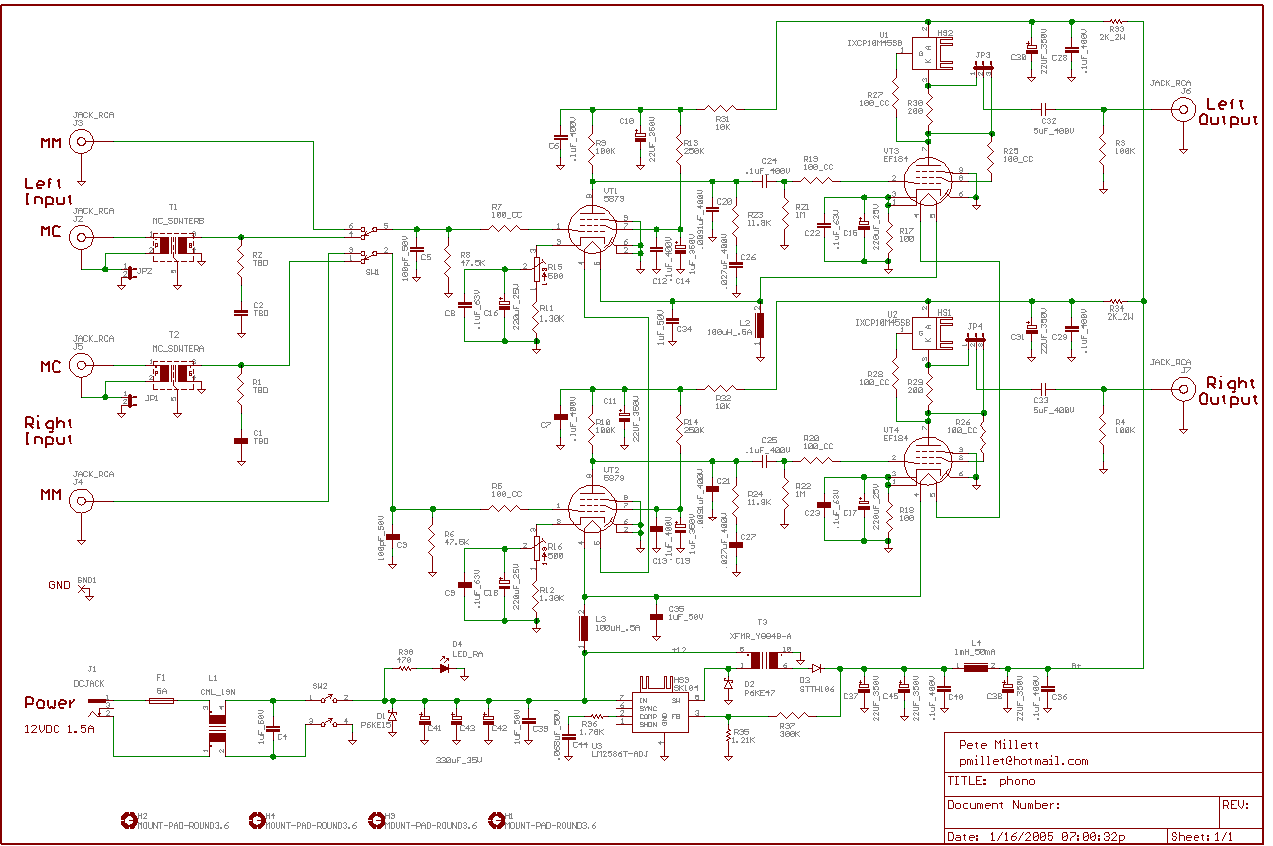
Pentode Phono Preamp
PLEASE READ - Commercial usage of information on this site:
I consider all the information that I post here to be in the public domain. So, you can use it however you want, for commercial or non-commercial use.
That said, I would appreciate it if you at least let me know if you are going to use any of the circuits or especially PCB Gerber files to make commercial products, or to sell bare PCB's.
There are some cases where products are being sold not only with my permission, but active involvement. The "Millett Hybrid" effort and others at HeadFi are examples (and excellent models of how the DIY community should work, in my opinion). There are other cases where I have asked vendors to sell PCB's as a service to hobbyists. And there are other cases where companies are manufacturing and selling PCB's, chassis, etc. without contacting me at all.
In ALL of these cases, I make no profit from any of the sales. Zero, zip, nada. I have a normal "day job" that pays the bills, this is strictly a hobby with me. So please do not expect me to provide the level of technical support that you might expect when buying a product. I try and help, but it sometimes takes me days - even weeks if I'm traveling for work - to respond.
Thanks for your indulgence in reading this!
I've been working on a passive RIAA pentode phono preamp. I really like the way it sounds, but as you might expect, using a pentode in the front end is not the quietest thing you can do. I find it acceptable, but others may or may not... the noise floor is about what I get for surface noise on a brand new test record. On most of the vinyl I have (granted, not all pristine) I can't hear the noise contribution of the preamp.
The first stage is a pentode-connected low-noise pentode. One of the nice things about using a pentode here is that since the plate resistance of the pentode is so high, it has little effect on the source impedance driving the RIAA network: that is dominated by the plate load resistor. Response is very accurate as shown in these measurement graphs - error is within a dB 20-20k:


Following the RIAA stage is a triode-connected EF184/5EJ7 with a Ixys CCS as a plate load. this is a very cheap and under-rated tube, especially connected as a triode! I am currently using the Ixys part "mu-connected", which gives a very low output impedance.
I've been comparing GE and RCA 5879 input tubes, as well as some miniature tubes. They are nearly equally noisy, but different. I really need to try some EF86's for comparison as well.
One unique thing I did here was to run the thing off of a 12V DC "wall-wart" power supply, and use a DC-DC converter to generate the B+. The beauty of this is that there is no 60Hz anywhere near the unit - the B+ switcher runs at 100kHz, well above anything audible. So the only noise you hear is from the tubes themselves.
Here's a schematic (or download a PDF file of it):

I'm also posting the Eagle CAD PCB, SCH, and Gerber files (330k ZIP archive), if you'd like to build your own or take the design and modify it.
And a photo of a PCB with just the power supply stuffed for testing.
The big round shiny circles are spots for Sowter moving-coil step-up transformers. The power transformer can be seen near the right-hand edge. The heatsinks that are not installed are for the IXCP10M45S CCS parts.
The power supply transformer is actually an off-the-shelf unit designed for off-line flyback use (120/240VAC -> 12VDC). Here it is being used "backwards" to get 300VDC from 12VDC. It's not as optimal as a custom design would be, but it's cheap and available (from Coilcraft, Y8848-A). Here's the data sheet. The switcher controller is a "simple switcher" part from National Semiconductor, the LM2586.
The power supply is not quite perfect. I think I would be better off with a purpose-designed transformer here... things are running a little close to the edge, and the AC stability is a little variable. Of three I built, one seemed to have either LF instability and/or poor ripple rejection of the incoming DC. Perhaps just a bit more work and thought would straighten it out, but I'm not actively working on this at the moment, as I'm very happy with what I have.
Also, here's a .XLS file bill of materials. Pretty much everything came from the "usual sources".
Although it isn't the quietest phono stage around, I think it sounds very nice indeed. The noise that is there is a mostly "tube noise", as opposed to 60Hz hum or buzz or other sounds that are annoying. Quite a lot of folks listened to it at ETF, and I had nobody say anything about the noise, nor could I hear it in the listening room there.